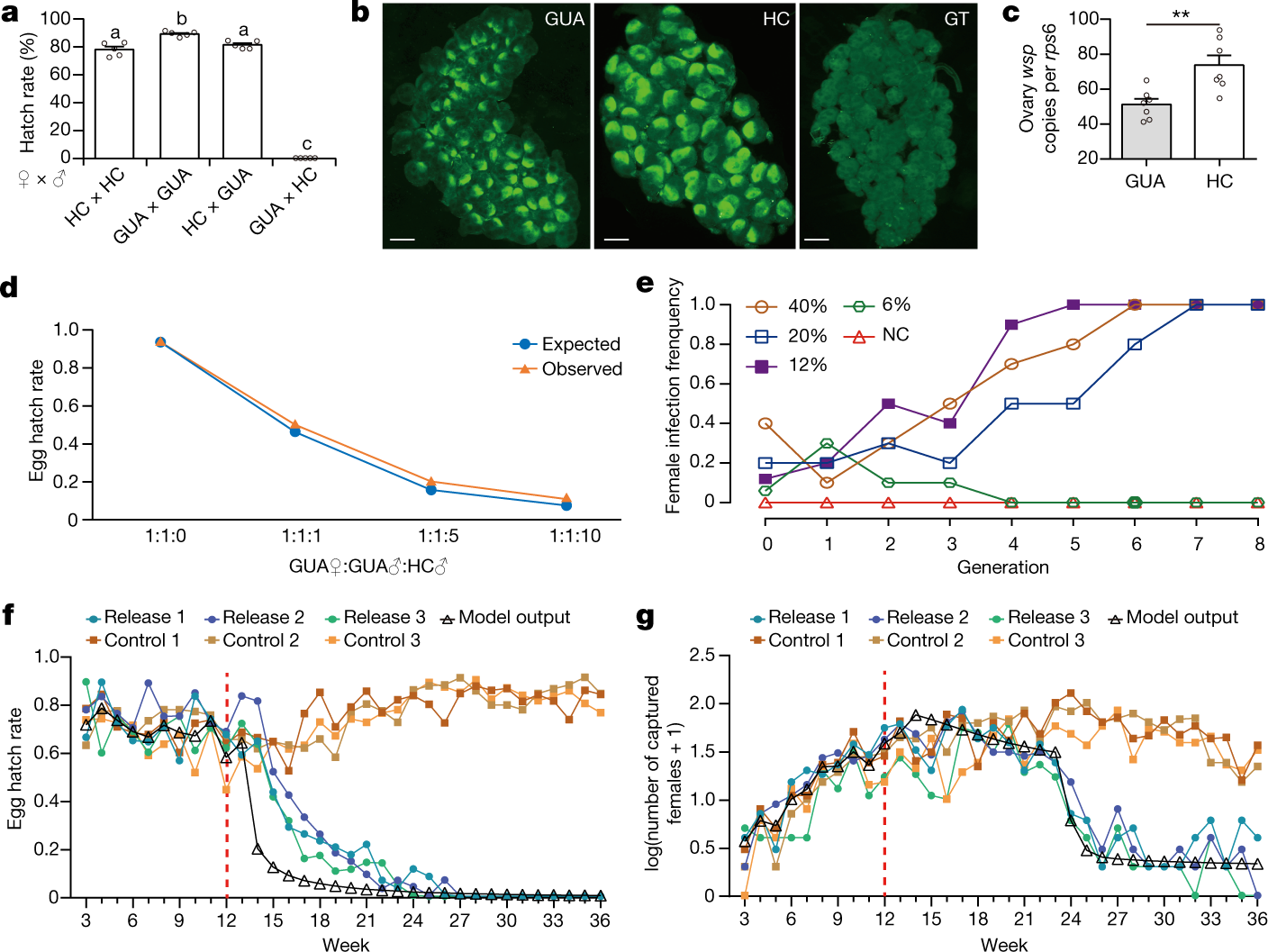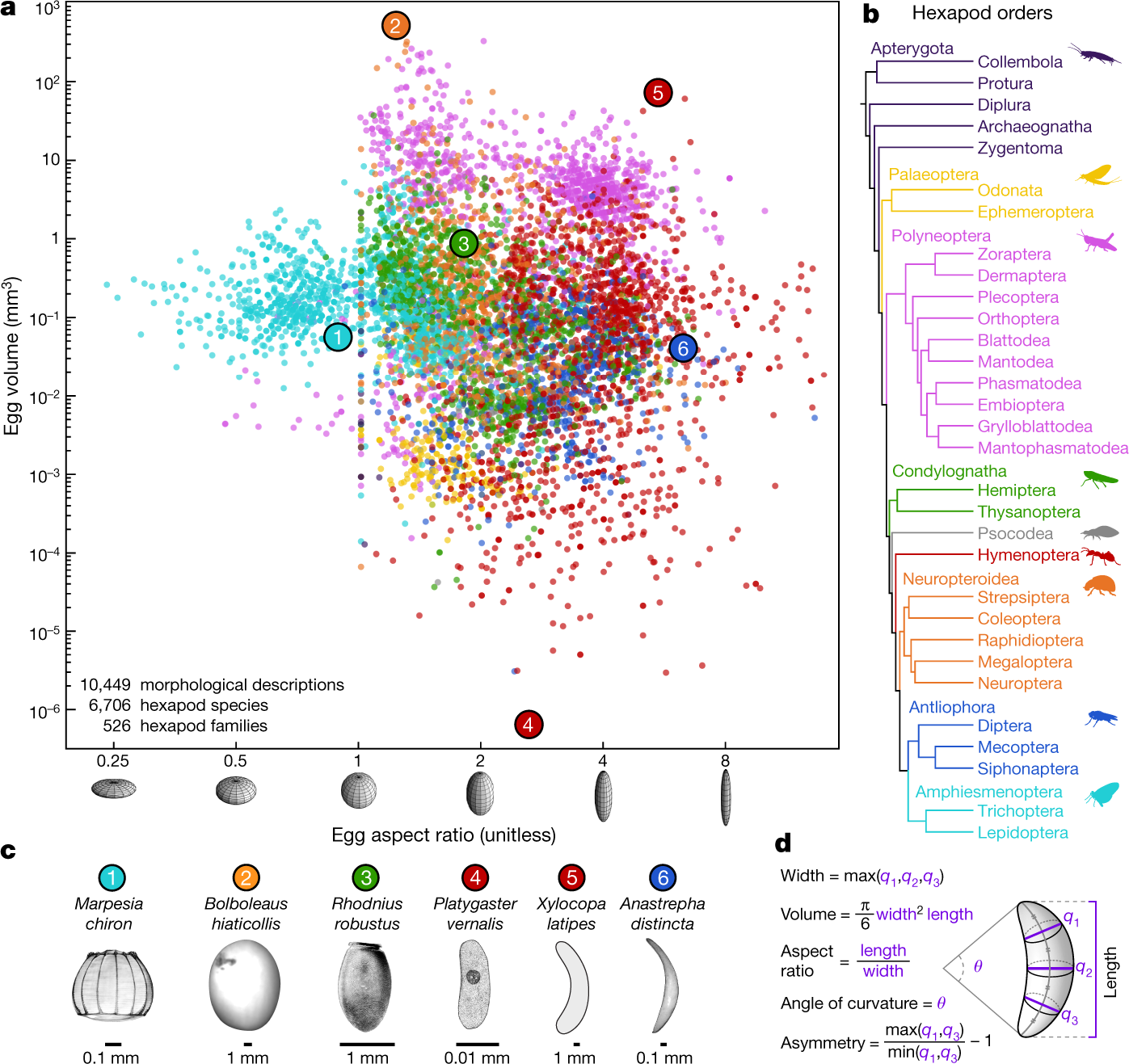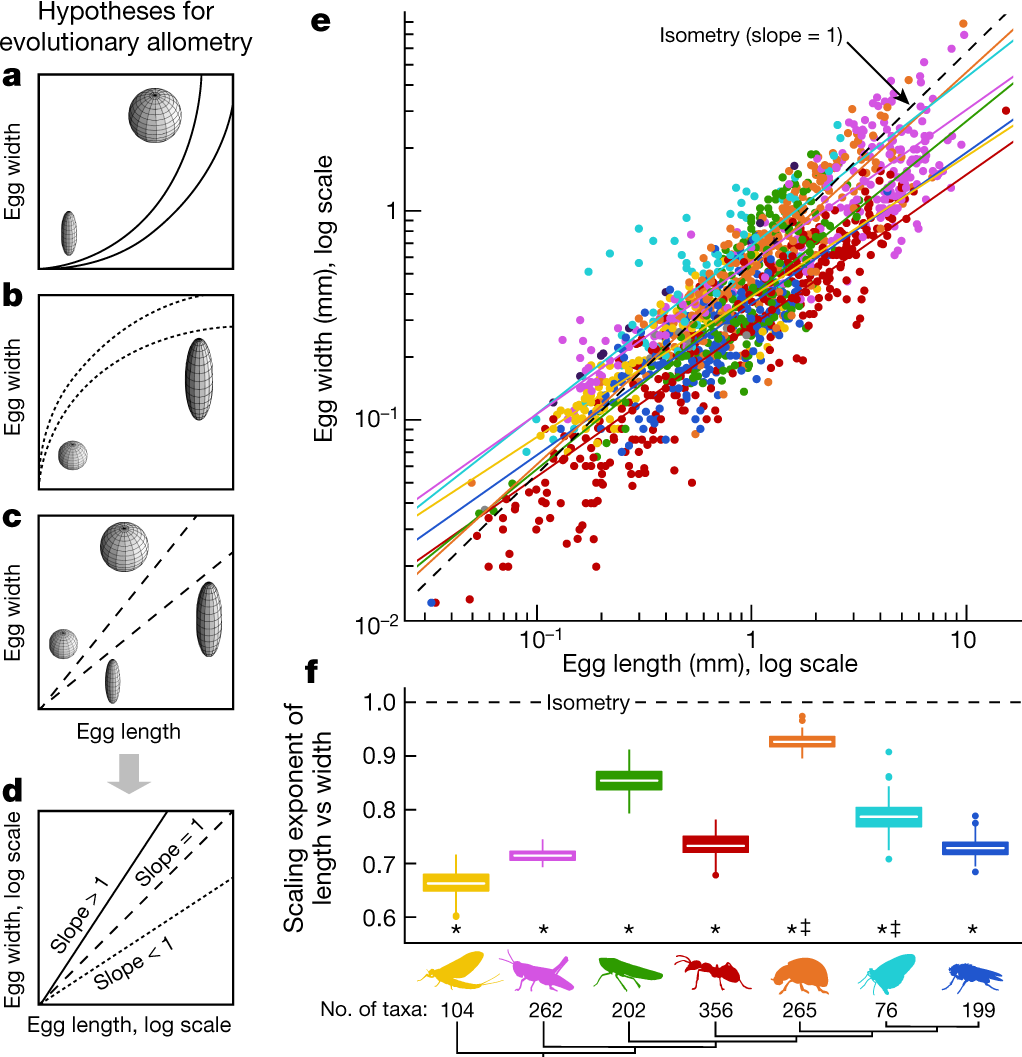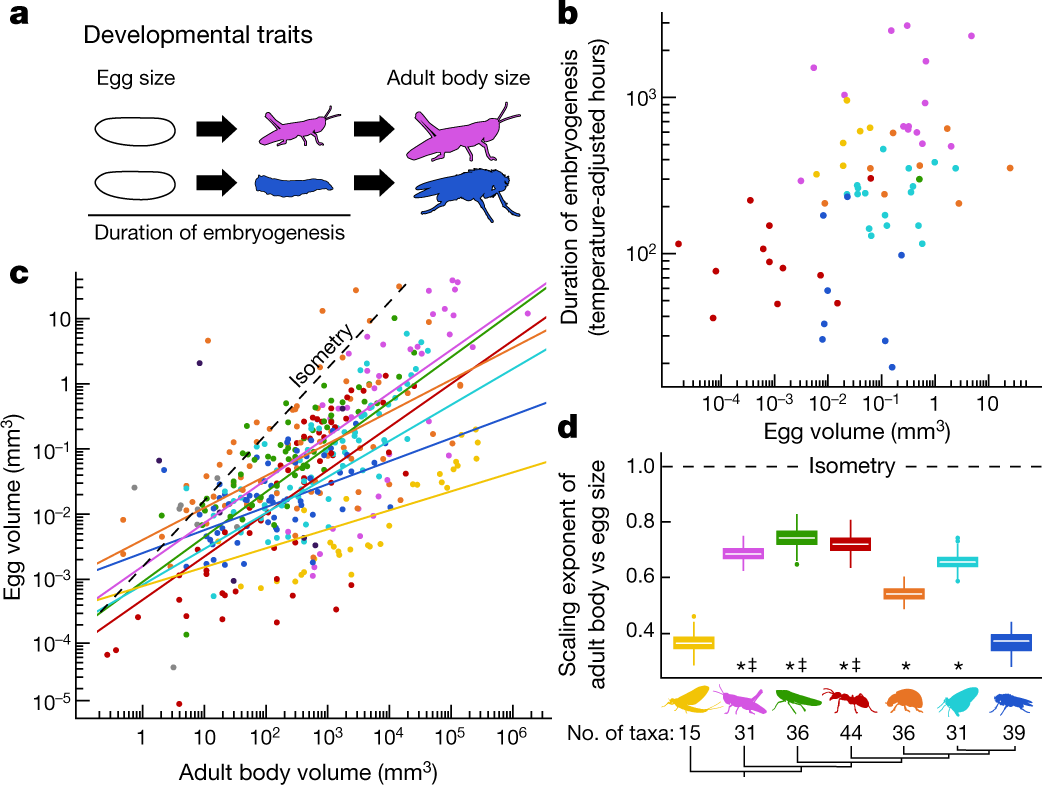NNadir
NNadir's JournalInvasive mosquitoes essentially eliminated from two Chinese Islands by combined biobased attack.
The paper I'll discuss in this post is this one: Incompatible and sterile insect techniques combined eliminate mosquitoes (Xi, Zhang, & Zheng, Nature Online Published July 17, 2019)
A Nature news item, which I believe should be open sourced discussing the paper is here: World’s most invasive mosquito nearly eradicated from two islands in China (Nature, July 17, 2019)
From the abstract and opening paragraphs of the full paper:
From the paper's body:
The mosquito in question is the one that transmits Zika virus and Dengue fever, both of which can be expected to increase their range because of our disinterest in addressing climate change:
The authors developed a transgenic mosquito that was susceptible to three strains of Wolbachia bacteria by inserting genes from another mosquito into the target species:
There is a risk of the transgenic females escaping into the environment and the gene spreading in such a way as to reduce the effectiveness of the technique, therefore a rigorous program of separating females - largely manual - was employed and the females were all irradiated to render them sterile. For this species of mosquito irradiation of males does not produce the desired effect because the irradiated males are not as competitively successful in mating with the females as the unirradiated males, thus are not able to have a huge effect on reducing the mosquito populations.
This approach apparently worked better:
Some graphics:

The caption:
 ?as=webp
?as=webp
The caption:

The caption:
 ?as=webp
?as=webp
The caption:
 ?as=webp
?as=webp
The effect of release on public support for the project:
The caption:
Conclusions from the paper:
It is important to note that this mosquito is an introduced species in many areas, and it is a transmitter of the Zika virus which will produced severely disabled children.
Other techniques are being explored to address parasite vectors, including those which transmit Malaria. These technologies also involve genetic engineering and are somewhat more controversial, in particular the technology involving "gene drives."
Gene drives are discussed in a news item in the previous issue of Nature: Self-destructing mosquitoes and sterilized rodents: the promise of gene drives
I am not particularly competent in this particular technology so as to be able to address it with strong opinions, but as invasive species are a huge environmental problem, and as human disease compromises human development goals which, in my view, extend to environmental degradation and war and other noxious human conditions, I am keeping an open mind.
North Dakota
While harvesting the raspberries growing all over my yard, I came to a radical conclusion.
I hate mosquitoes more than thorns.
I'd rather go blind at the White House.
June 2019 is the third worst June recorded at the Mauna Loa CO2 observatory in 60 years.
I keep spreadsheets of the monthly and weekly data at the Mauna Loa Carbon dioxide observatory which I can use to sort and interpret the data. The data going back to 1958 is posted on the observatory's website, 61 years of data and 60 years of year to year monthly comparisons. June 2019 was recently posted. June 2019 is the third worst ever recorded.
Monthly Average Mauna Loa CO2 (Accessed July 14, 2019.)
The average reading in June 2019 was 413.92 ppm as compared to 410.79 ppm for June of 2018, 3.13 ppm higher than last year. (The carbon dioxide levels fall every year from roughly May to September during the Northern Hemisphere's summer.)
The worst June ever recorded, only one of two such values to exceed a change greater than 4.00 ppm of all the months ever recorded at Mauna Loa, was 4.01 ppm in 2016. (April 2016 saw an increase of 4.16 ppm over April of 2015).
Of the twelve worst monthly readings, 7 have occurred since January of 2015. The 3.13 recorded this month is the 20th worst of 724 monthly year to year increase readings, placing it the 97th percentile for all such readings.
The second worst June, 3.36 ppm over the previous year occurred in 1998, an El Nino year in which fires set to clear the Malaysian and Indonesian rain forests to make palm oil plantations to supply "renewable biodiesel" to Germany and other countries went out of control, burning much of the rain forest in those regions and releasing the carbon.
The average year to year increases for every month since June of 2009 is 2.33 ppm/year. The average for the first ten years of such data from June of 1959 to June of 1969 was 0.82 ppm/year.
If any of this troubles you, don't worry, be happy.
Head over to E&E forum here and read posts confusing the power unit "Watt" with the infinitely more important energy unit "Joule" and read lots and lots of posts how so called "renewable energy" "could" supply 100% of Europe'e energy by "such and such a year" when I, among, I suspect, all the people handing out this delusional horseshit will be dead.
Maybe you'll feel better. I won't, but maybe you will.
Decades of hearing this stuff on my part has not prevented me from observing that so called "renewable energy" did not work, is not working, and, I am absolutely certain, will not work to even slow climate change, never mind stop it. In fact, when this rhetoric received world wide support at a level of trillions of dollars in this century, the degradation of the atmosphere accelerated as opposed to slowed.
I'd love to stay and chat, but I'm reading some scientific papers on how techentium sulfide PV cells could be just great. They might be better than all this stuff we have now for no result, but that certainly won't matter, any more than the idea of distributing lead based perovskite solar cells, which some people actually think is a good idea, won't matter.
We're cooked and cooking.
Have a pleasant Sunday afternoon.
Woodstock
Gay black woman classical singer upsetting evolutionary doctrine by discussing insects.
The news item I'll discuss is here: The biologist using insect eggs to overturn evolutionary doctrine (Giorgia Guglielmi, Nature 571, 24-26 (2019))
I believe the news item is open sourced, but I'll excerpt it anyway, before referring to excerpts and graphics in Dr. Extatour's paper in the same issue of Nature, which is probably not open sourced. That paper is this one: Insect egg size and shape evolve with ecology but not developmental rate (Extatour, Church, et al, Nature 571, 58–62 (2019))
Excerpts from the News Item:
As she sat with her adviser and went through the dozens of unsuccessful tests she had done, they came up with one last strategy to make the flies using a different gene variant. Her adviser reassured her that it wouldn’t have any unwanted effects, but couldn’t point to any hard data. Even with time running out, Extavour was unwilling to take his word for it. She embarked on a months-long series of experiments to prove to herself that the gene did what he said. In the process, she built her own tools to ask a question that nobody had addressed before...
...Two decades later, Extavour is still pursuing original research questions and overturning convention as she investigates some of the most fundamental aspects of animal development. In her lab at Harvard University in Cambridge, Massachusetts, Extavour wants to understand how single-celled entities blossomed into multicellular organisms during evolution, and how the intricate bodies of such organisms can develop from cells that all have the same genetic blueprint...
...Whereas most researchers work with only a handful of well-studied animals, such as fruit flies and mice, Extavour’s success comes from her penchant for less-ubiquitous lab critters, such as sand fleas and crickets. Typical model organisms harbour just a fraction of the diversity found in nature, so alongside the usual suspects, she examines a wide range of animals...
...Two decades later, Extavour is still pursuing original research questions and overturning convention as she investigates some of the most fundamental aspects of animal development. In her lab at Harvard University in Cambridge, Massachusetts, Extavour wants to understand how single-celled entities blossomed into multicellular organisms during evolution, and how the intricate bodies of such organisms can develop from cells that all have the same genetic blueprint. “I have never heard of a problem that I thought was more interesting than that,” she says.
Extavour’s curiosity and rigorous thinking have led her to test, and in some cases disprove, widely accepted hypotheses about development and evolution. She upended the leading theory of how most animals generate the precursors of eggs and sperm1, and in a Nature paper this week, she and her team have cracked a long-standing question about the astonishing diversity of insect eggs2.
Just as an orchestra produces a sublime concerto, a suite of meticulously balanced genes controls an organism’s form and function. Extavour appreciates this better than most: she juggles science alongside a side career as a soprano. Even while rewriting scientific doctrine, she performs with professional ensembles in Boston and has appeared in operas and choirs from Canada to Spain.
Whereas most researchers work with only a handful of well-studied animals, such as fruit flies and mice, Extavour’s success comes from her penchant for less-ubiquitous lab critters, such as sand fleas and crickets. Typical model organisms harbour just a fraction of the diversity found in nature, so alongside the usual suspects, she examines a wide range of animals that help to reveal which genetic tools evolution most commonly uses.
She has also emerged as a champion for diversity and inclusivity, having experienced racism and prejudice as a gay black woman in science. Even after becoming a tenured professor, she still encounters people who assume she doesn’t belong. She spends time mentoring students from under-represented groups and helped to found the Pan-American Society of Evolutionary Developmental Biology, which unites hundreds of researchers across the Americas...
...Music has been in Extavour’s life since she was in the cradle. Science came much later, almost by accident.
Her father, who moved to Canada from Trinidad and Tobago in the 1960s, was a broadcast technician and percussionist. He played in concerts and used to practise in the basement of their three-bedroom house in downtown Toronto with his four kids. The first instrument Extavour played was a steel drum. In elementary school, she learnt to read music and taught herself to play the flute, borrowing music scores from the library. At university, Extavour played in orchestras and duos, and took up classical singing...
...A high-school friend got her interested in the workings of the brain, and by the end of her undergraduate studies, she had found her way to molecular genetics. At the University of Toronto, Extavour traded off science and music, landing her first professional singing gig with a baroque orchestra and working a summer job as an administrative assistant for developmental biologist Joseph Culotti. There, Extavour heard for the first time about the problem...
Dr. Extavour in her office:

As promised, some brief excerpts from her paper beginning with the open abstract...:
Insect eggs are a compelling system with which to test macroevolutionary hypotheses. Egg morphologies are extraordinarily diverse8, yet they can be readily compared across distant lineages using quantitative traits. Changes in egg size have been studied in relation to changes in other aspects of organismal biology9, including adult body size10,11,12, features of adult anatomy13 and offspring fitness through maternal investment14. Eggs must also withstand the physiological challenges of being laid in diverse microenvironments, including in water, air, or inside plants or animals15. Furthermore, because the fertilized egg is the homologous, single-cell stage in the lifecycle of multicellular organisms, egg size diversity is relevant to the evolution of both cell size and organism size8,14.
Three classes of hypotheses have been proposed to explain the evolution of egg size and shape. The first suggests that geometric constraints due to the physical scaling of size and shape explain the diversity of egg morphology13,16,17,18,19. The second suggests that there is an interaction between egg size and the rate of development20,21,22. Finally, the third suggests that the diversification of size and shape is a response to ecological or life-history changes10,13,15,23...
...Using custom bioinformatics tools, we assembled a dataset of 10,449 published descriptions of eggs, comprising 6,706 species, 526 families and every currently described extant hexapod order24 (Fig. 1a and Supplementary Fig. 1). We combined this dataset with backbone hexapod phylogenies25,26 that we enriched to include taxa within the egg morphology dataset (Supplementary Fig. 2) and used it to describe the distribution of egg shape and size (Fig. 1b). Our results showed that insect eggs span more than eight orders of magnitude in volume (Fig. 1a, c and Supplementary Fig. 3) and revealed new candidates for the smallest and largest described insect eggs: respectively, these are the parasitoid wasp Platygaster vernalis27 (volume = 7 × 10?7 mm3; Fig. 1c) and the earth-boring beetle Bolboleaus hiaticollis28...
Figure 1:

The caption:
Figure 2:

The caption:
Figure 3:

The caption:

The caption:
The conclusion to the paper:
From the conclusion of the news item:
Extavour learnt from her family that she should not let other people’s prejudices define what she could and could not do; they also inspired her to set her own standards for how well she should do it. And those who know her say that Extavour aims high. “She’s motivated by big questions,” Dunn says. “She has her eyes on the horizon.”
It would be interesting to hear the orange idiot have one of his fellow racists read to him on Fox News and use it to expound to his fellow racists how ignorant barely literate frat boy White Men who speak like 4th graders are superior to gay, black women.
Well, perhaps not interesting, one can only spend a limited amount of time being interested in a functional idiot, but it would be telling.
The weekly year to year Mauna CO2 reading for the week of 6/30/19 among the 50 worst increases ever.
Each year, the maximal value for carbon dioxide levels in the atmosphere for a particular year is observed in the Northern Hemisphere's spring. The Mauna Loa Observatory reports weekly year to year increases for each week of the current year compared to the same week in the previous year.
This year, in 2019, as is pretty much the case for the entire 21st century, these maxima represent the highest concentrations of carbon dioxide ever recorded going back to 1958, when the Mauna Loa carbon dioxide observatory first went into operation. Weekly data is available on line, however, only going back to the week of May 25, 1975, when the reading was 332.98 ppm.
May 12, 2019 set the all time record for such readings: 415.39 ppm.
These readings, as I often remark vary in a sinusoidal fashion, where the sine wave is imposed on a monotonically increasing more or less linear axis, not exactly linear in the sense that the slope of the line is actually rising slowly while we all wait with unwarranted patience for the bourgeois wind/solar/electric car nirvana that has not come, is not here and will not come.
This graphic from the Mauna Loa website shows this behavior:

The annual minima are generally recorded in the Northern hemisphere's autumn. This year's absolute readings will fall until around September, whereupon they will begin to rise to what is sure to be a new record maximum in 2020.
Somewhat obsessively I keep a spreadsheet of the weekly data, which I use to do calculations to record the dying of our atmosphere, a triumph of fear, dogma and ignorance that did not have to be, but nonetheless is.
In these spreadsheets, in particular, I record in this spreadsheet the increases over the previous year.
Here is the data for the week ending June 30, 2019:
Week beginning on June 30, 2019: 413.38 ppm
Weekly value from 1 year ago: 409.57 ppm
Weekly value from 10 years ago: 388.63 ppm
As of this writing, there have been 2,266 such weekly readings recorded at Mauna Loa, going back to 1975. The increase is the 32nd highest ever recorded among all of these. This places in the top 50 among all such data points, greater than 98.6% of all such readings, in the "percent talk" utilized to generate wishful thinking about this disaster.
With the year just about half over, 9 of the 50 highest year to year weekly average increases ever recorded have been in 2019. Thirty-four of the top 50 such readings have taken place in the last 5 years; 38 in the top 50 recorded in last ten years, and 41 of the top 50 recorded in this century.
The average increases over the last 4 weeks when compared to the same week in 2018 has been 3.26 ppm. For the whole of 2019, these weekly year to year increases have averaged 3.11 ppm.
In the 20th century these figures averaged 1.54 ppm; in the 21st, 2.14 ppm (and rising).
If the fact that this reading is 24.75 ppm higher than it was ten years ago bothers you, don't worry, be happy. You can read all about how wonderful things will be "by 2050" or "by 2100." Wind. Solar. Elon Musk. Tesla Car. And all that.
If you're even a tiny bit troubled, head on over to the E&E forum here, and read all about how great so called renewable energy is doing from one on the anti-nukes running the place and why the toxicology and energy waste associated with the second law of thermodynamics with respect to batteries is "green."
My impression that I've been hearing all about how rapidly bird and bat grinding wind turbines are being installed since I began writing here in 2002, when the reading on April 21, 2002 was 375.42 ppm.
This should not disturb you since it is better to think everything is fine rather than focus on reality and focusing on reality - particularly in Trumpian times - is as annoying here as elsewhere.
All this jawboning about the wonderful growth of so called "renewable energy" has had no effect on climate change, is having no effect on climate change, and won't have any effect on climate change, but it's not climate change that counts: It's all that wonderful marketing showing pictures giant sleek wind turbines on steel posts that counts.
Don't be angry, be happy and nice. Say nice things. Be pleasant.
If the fact that steel is made by coking coal at high temperatures in coal fired furnaces enters your mind, I suggest you meditate and say, "OM...om...om...om..." until you're only left with happy thoughts.
At the risk of repetitively asserting that reality - as opposed to cheering for our own wishful thinking - matters, though let me say again:
In this century, world energy demand grew by 164.83 exajoules to 584.95 exajoules.
In this century, world gas demand grew by 43.38 exajoules to 130.08 exajoules.
In this century, the use of petroleum grew by 32.03 exajoules to 185.68 exajoules.
In this century, the use of coal grew by 60.25 exajoules to 157.01 exajoules.
In this century, the solar, wind, geothermal, and tidal energy on which people so cheerfully have bet the entire planetary atmosphere, stealing the future from all future generations, grew by 8.12 exajoules to 10.63 exajoules.
10.63 exajoules is under 2% of the world energy demand.
Nuclear energy, provided 28.81 exajoules, or 4.9% of world energy demand in 2017, this while under constant attack by people who think it is "too dangerous." In it's entire history, stretching over half a century nuclear has not killed as many people as will die today from air pollution, which is roughly 19,000 people; seven million people will die from air pollution this year.
2018 Edition of the World Energy Outlook Table 1.1 Page 38 (I have converted MTOE in the original table to the SI unit exajoules in this text.)
Nuclear energy was the last, best hope for humanity and, in fact, for the planet.
Fukushima.
Really? Really?
If last week's death toll from the heat wave in Europe is anything like the one that struck in 2003, more than 70,000 people will have died from it: Death toll exceeded 70,000 in Europe during the summer of 2003, (Jean-Marie Robain et al, Comptes Rendus Biologies Volume 331, Issue 2, February 2008, Pages 171-178).
If you think that unlike you, I am worrying and not being happy, you can always chant stuff about how "by 2050" or "by 2075" or "by 2100" future generations will all live in a so called "renewable energy" nirvana powered by the sun and the wind and tooling around in Tesla electric cars.
I'll be dead "by 2050," as will most of the people doing such soothsaying about that magic year, but I'm sure that the future generation living through 2050 will all be cheering for our wonderful insight into the world in which they will be living.
Or maybe not. Maybe they won't forgive us for our wishful thinking by which we casually dumped responsibility on them to do what we were purely incompetent to do ourselves, this while we consumed every last drop of rare elements to live in our bourgeois moral hell.
We will not be forgiven, nor should we be.
I wish you a pleasant work week.
Life and Death in New Jersey.
A friend turned me on to this very beautifully written blog post, and I thought I'd share it. It's about the graves in New Jersey of Kurt Goedel, John Von Neumann, and the grave of Bell Labs.

For convenience, here the opening paragraphs are excerpted, with the link to the full thing below:
By Wavefunction on Monday, May 13, 2019
On a whim I decided to visit the gently sloping hill where the universe announced itself in 1964, not with a bang but with ambient, annoying noise. It’s the static you saw when you turned on your TV, or at least used to back when analog TVs were a thing. But today there was no noise except for the occasional chirping of birds, the lone car driving off in the distance and a gentle breeze flowing through the trees. A recent trace of rain had brought verdant green colors to the grass. A white-tailed deer darted into the undergrowth in the distance.
The town of Holmdel, New Jersey is about thirty miles east of Princeton. In 1964, the venerable Bell Telephone Laboratories had an installation there, on top of this gently sloping hill called Crawford Hill. It was a horn antenna, about as big as a small house, designed to bounce off signals from a communications satellite called Echo which the lab had built a few years ago. Tending to the care and feeding of this piece of electronics and machinery were Arno Penzias – a working-class refuge from Nazism who had grown up in the Garment District of New York – and Robert Wilson; one was a big picture thinker who enjoyed grand puzzles and the other an electronics whiz who could get into the weeds of circuits, mirrors and cables. The duo had been hired to work on ultra-sensitive microwave receivers for radio astronomy.
In a now famous comedy of errors, instead of simply contributing to incremental advances in radio astronomy, Penzias and Wilson ended up observing ripples from the universe’s birth – the cosmic microwave background radiation – by accident. It was a comedy of errors because others had either theorized that such a signal would exist without having the experimental know-how or, like Penzias and Wilson, were unknowingly building equipment to detect it without knowing the theoretical background. Penzias and Wilson puzzled over the ambient noise they were observing in the antenna that seemed to come from all directions, and it was only after clearing away every possible earthly source of noise including pigeon droppings, and after a conversation with a fellow Bell Labs scientist who in turn had had a chance conversation with a Princeton theoretical physicist named Robert Dicke, that Penzias and Wilson realized that they might have hit on something bigger. Dicke himself had already theorized the existence of such whispers from the past and had started building his own antenna with his student Jim Peebles; after Penzias and Wilson contacted him, he realized he and Peebles had been scooped by a few weeks or months. In 1978 Penzias and Wilson won the Nobel Prize; Dicke was among a string of theorists and experimentalists who got left out. As it turned out, Penzias and Wilson’s Nobel Prize marked the high point of what was one of the greatest, quintessentially American research institutions in history...
Life and Death in New Jersey
I have always meant to take a part of a day and wander through the Princeton Cemetery, but have never done it.
Profile Information
Gender: MaleCurrent location: New Jersey
Member since: 2002
Number of posts: 33,518